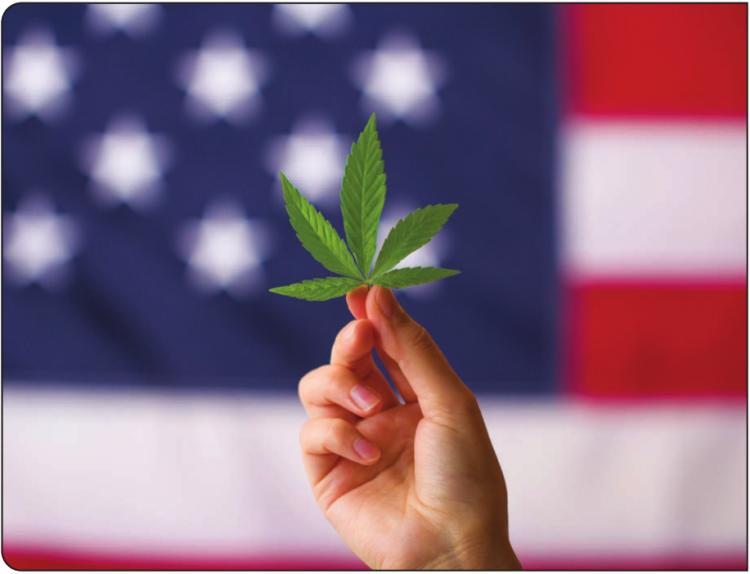Justice Thomas’s comments stir talk about efficacy of current system

Over two-thirds of states, including New Hampshire, have now legalized some form of marijuana use. Although many thriving and state-sanctioned marijuana operations now exist in those states, marijuana remains illegal under federal law. That is so, even as the federal government has tried to accommodate state policy by curbing criminal enforcement efforts in states that have endorsed legalization.
The result is a patchwork of laws and regulations that creates significant hardships for marijuana-related businesses, many of whom, because of federal law, are unable to access ordinary banking services, deprived of certain federal advantages, and exposed to civil and criminal liability, among other things.
Many have criticized this legal disharmony and the confusion that it has caused. A few weeks ago, U.S. Supreme Court Justice Clarence Thomas added his voice to this chorus when he published a statement concerning the Supreme Court’s decision not to hear Standing Akimbo LLC v. United States, a case in which the IRS sought to deprive a medical marijuana dispensary the opportunity to deduct business expenses because it trafficked in illegal substances.
Thomas’s statement criticized federal marijuana regulation as an “unstable state of affairs” that exhibited limited coherence.
But Thomas’s statement did something else. In it, he raised doubt about the constitutionality of federal marijuana policy, and in so doing offered the most substantial criticism from a Supreme Court justice in years about the legality of federal marijuana regulation.
Although Thomas’s statement was not joined by his colleagues, it is still notable, because it promotes a new legal framework for challenging the constitutionality of the federal government’s efforts to regulate local marijuana use and production.
The key to that framework is challenging the
foundation of Gonzales v. Raich, the Supreme Court’s 2005 decision that
concluded Congress possesses the authority to regulate local marijuana
cultivation and use authorized by state law.
In
that case, the Supreme Court counterintuitively — and controversially —
concluded that Congress’s limited constitutional authority to regulate
interstate commerce allowed it to also regulate entirely local marijuana
cultivation and use.
The
Raich decision was premised on economic realities. Marijuana grown
locally is indistinguishable from marijuana sold on the interstate
market and can easily find its way to that interstate market. Because of
that, the court concluded that the federal government’s authority to
ban local marijuana activity was a necessary power needed to further the
broad and comprehensive federal prohibition on interstate marijuana
sales.
As Justice
Thomas pointed out in his Standing Akimbo statement, however, the
current necessity for a local ban on marijuana has been undermined by
the federal government’s recent reluctance to actively enforce that ban
in states where legalization exists. Congress, for example, has included
prohibitions in its last several budgets prohibiting federal
prosecutors from using federal resources to undermine states’ medicinal
marijuana systems. Likewise, the Department of Justice has issued
policies advising that federal prosecutors should, generally, not focus
their efforts on prosecuting those complying with state legalization
schemes.
As Justice Thomas pointed
out, the federal government’s once-comprehensive ban on marijuana
regulation has been replaced by a “half-in, half-out” approach.
This
raises the obvious question that drove Justice Thomas’s skepticism
about the current constitutionality of the federal regime: Can banning
local cultivation and use really be “necessary” to federal regulation,
when the federal government itself appears to have lost interest in
enforcing that ban in vast areas of the nation? If the answer to that
question is no, as one suspects Justice Thomas believes it is, then the
federal government’s ban on local and intrastate marijuana production
could be vulnerable to challenge. That is especially true in states that
have adopted measures ensuring that marijuana production and
distribution remains within state borders.
Federal
marijuana policy and its effect on state marijuana schemes is an area
that begs for regulatory or legislative reform — and, indeed, reform
efforts are underway. If those efforts fail, however, marijuana-related
businesses will increasingly turn to legal challenges as a potential
means of opposing the burdens of federal law.
Thomas’s
critiques will not only provide additional fodder for businesses in
those legal disputes, but they will also provide his colleagues food for
thought if the nation’s fractured marijuana policy continues to breed
conflict.
Ryan
Lirette, an attorney with the law firm of Sheehan Phinney, focuses on
contract disputes, construction litigation, Chapter 11 litigation and
real estate litigation. He has previously published articles on
federalism and the Commerce Clause.
The federal government’s
once-comprehensive ban on marijuana regulation has been replaced by a
‘half-in, half-out’ approach, driving skepticism about the current
constitutionality of the federal regime.